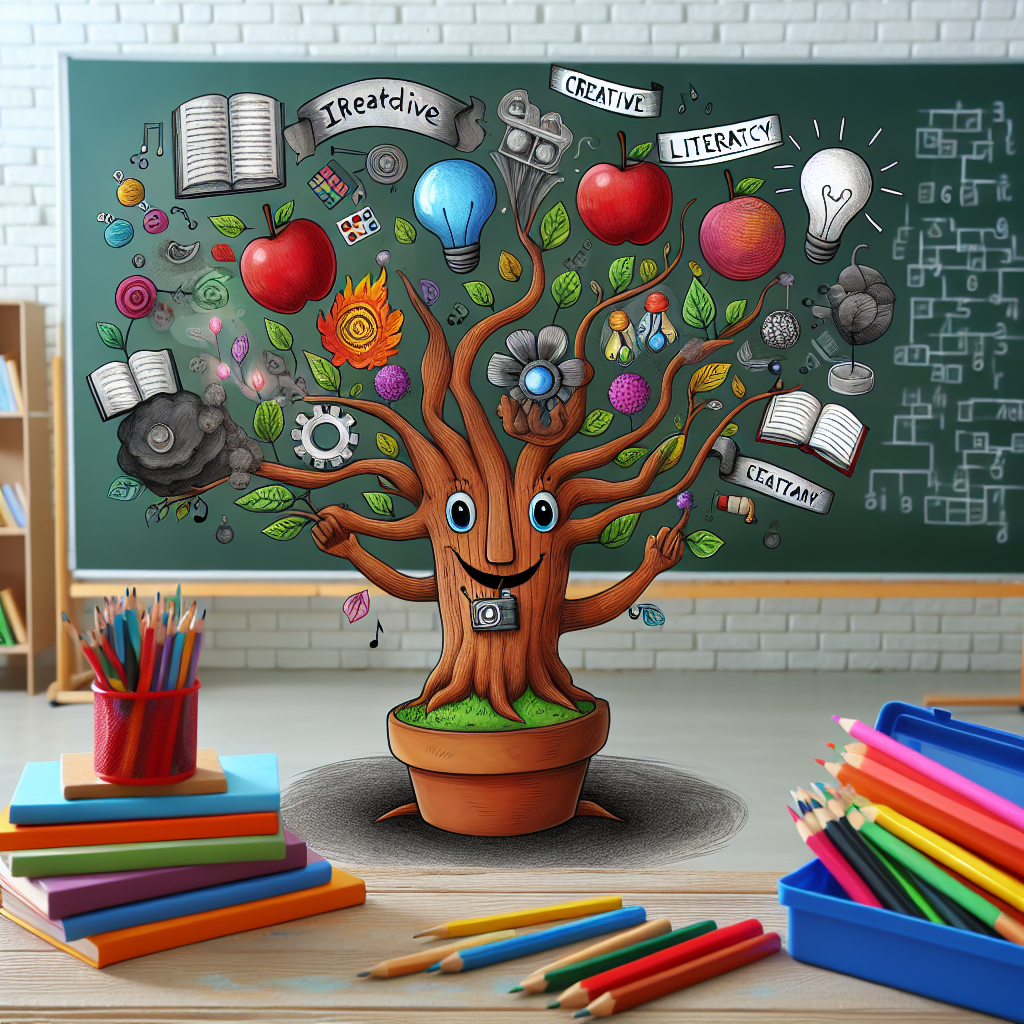Strategi pengajaran literasi kreatif di sekolah: mengembangkan keterampilan berpikir kritis dan kreatif melalui pendekatan inovatif.
Strategi Pengajaran Literasi Kreatif di Sekolah
-
Table of Contents
- Introduction
- The Importance of Creative Literacy Teaching
- 1. Fostering Critical Thinking
- 2. Enhancing Communication Skills
- 3. Promoting Problem-Solving Abilities
- Effective Strategies for Creative Literacy Teaching
- 1. Project-Based Learning
- 2. Integration of Arts and Literature
- 3. Use of Technology
- 4. Cultivating a Creative Environment
- Conclusion
Introduction

Literacy is a fundamental skill that plays a crucial role in a child’s education and overall development. In today’s rapidly changing world, traditional literacy skills alone are no longer sufficient. The ability to think creatively, critically analyze information, and communicate effectively has become increasingly important. Therefore, it is essential for schools in Indonesia to adopt strategies that promote creative literacy teaching. This article will explore the concept of creative literacy teaching and discuss effective strategies that can be implemented in Indonesian schools.
The Importance of Creative Literacy Teaching
Creative literacy teaching goes beyond the traditional approach of teaching reading and writing skills. It focuses on developing students’ ability to think critically, solve problems, and express themselves creatively. By incorporating creative literacy teaching strategies, schools can equip students with the skills they need to succeed in the 21st century.
1. Fostering Critical Thinking
One of the key benefits of creative literacy teaching is its ability to foster critical thinking skills. Traditional literacy teaching often focuses on rote memorization and regurgitation of information. However, creative literacy teaching encourages students to question, analyze, and evaluate information. This helps them develop a deeper understanding of the content and enhances their ability to think critically.
2. Enhancing Communication Skills
Creative literacy teaching also plays a vital role in enhancing students’ communication skills. Through activities such as storytelling, role-playing, and group discussions, students are encouraged to express their thoughts and ideas effectively. This not only improves their oral communication skills but also enhances their ability to write coherently and persuasively.
3. Promoting Problem-Solving Abilities
Incorporating creative literacy teaching strategies in schools also promotes students’ problem-solving abilities. By engaging in activities that require them to think creatively and find innovative solutions, students develop essential problem-solving skills. These skills are invaluable in real-life situations, where the ability to think outside the box and find solutions is highly valued.
Effective Strategies for Creative Literacy Teaching
Now that we understand the importance of creative literacy teaching, let’s explore some effective strategies that can be implemented in Indonesian schools.
1. Project-Based Learning
Project-based learning is an effective strategy that promotes creative literacy teaching. It involves students working on a project or task that requires them to apply their literacy skills in a real-world context. For example, students could be tasked with creating a multimedia presentation on a specific topic, where they have to research, analyze information, and present their findings creatively. This approach not only enhances students’ literacy skills but also encourages collaboration and critical thinking.
2. Integration of Arts and Literature
Integrating arts and literature into the curriculum is another effective strategy for creative literacy teaching. By incorporating visual arts, music, drama, and literature into the learning process, students are exposed to different forms of expression. This helps them develop a deeper appreciation for creativity and enhances their ability to interpret and analyze various forms of media.
3. Use of Technology
Incorporating technology into the classroom can greatly enhance creative literacy teaching. Technology provides students with access to a vast amount of information and resources, allowing them to explore different perspectives and engage in self-directed learning. Additionally, technology tools such as multimedia presentations, digital storytelling, and online collaboration platforms can be used to encourage creativity and enhance students’ communication skills.
4. Cultivating a Creative Environment
Creating a creative environment is crucial for effective creative literacy teaching. Teachers should encourage students to think outside the box, take risks, and express their ideas freely. Classroom activities should be designed to promote creativity and provide opportunities for students to explore their interests and passions. By fostering a creative environment, schools can nurture students’ creative thinking abilities and enhance their overall literacy skills.
Conclusion
In conclusion, creative literacy teaching is essential in today’s rapidly changing world. By adopting strategies that promote critical thinking, enhance communication skills, and promote problem-solving abilities, Indonesian schools can equip students with the necessary skills to succeed in the 21st century. Project-based learning, integration of arts and literature, use of technology, and cultivating a creative environment are effective strategies that can be implemented to promote creative literacy teaching. By embracing these strategies, schools can empower students to become lifelong learners and creative thinkers.







